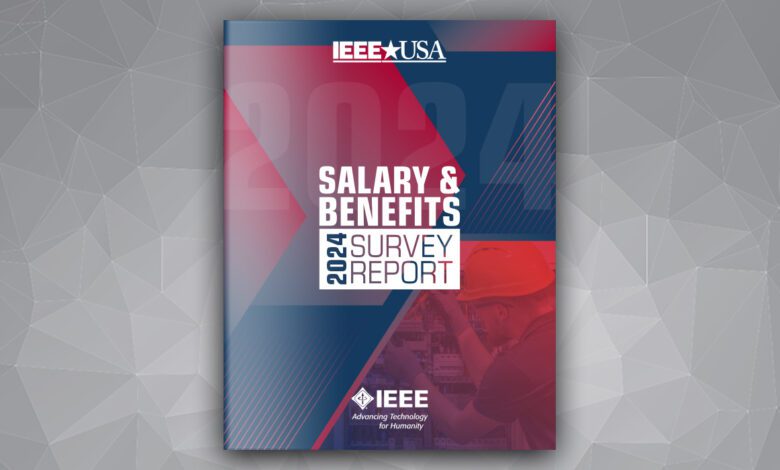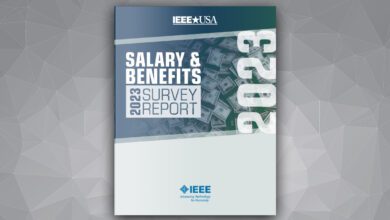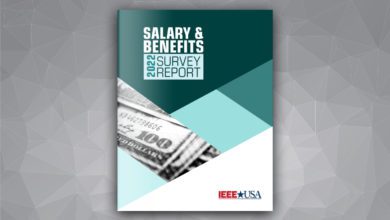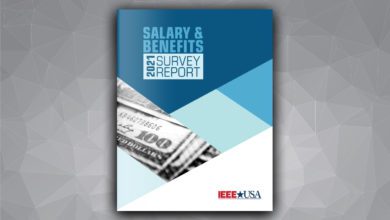
The report noted that “the variance in earned income is significant, influenced … by a host of factors.” The report goes into detail on factors such as education level, certification, specialty, experience, and level of responsibility.
The report also reveals salary differences by employer characteristics, such as organization size; and differences between region, state, metropolitan districts and demographic attributes, such as gender and race. The 60-page report is truly a treasure trove of information — especially if you might be considering moving to another part of the country; switching to a new field of engineering; deciding whether to invest in additional education or certification; or just wanting to know where your salary stands in comparison with your peers.
The survey showed a clear advantage of moving into management, stating, “A management job still results in the highest median primary income, with a salary advantage of approximately $31,500 a year for those in technical management, compared to the median for all respondents. General management respondents and those in marketing/sales also do relatively well, compared to the whole.”
When comparing education levels, respondents with Ph.D.s (30 percent of respondents) earned the highest primary income at $193,636. Those with an MBA earned on average $185,000. Those holding an MSEE or MSCE reported a median of $182,500. BSEE or BSCE degree-holders earned a median income of $159,000, in 2023.
Information is broken down across nine areas, and more than 50 Professional Areas of Technical Competence (PATCs), if a large enough sample of respondents was received. The broad areas included Circuits and Devices; Communications Technology; Computers/Software Technology; Electromagnetics and Radiation; Energy and Power Engineering; Engineering and Human Environment; Industrial Applications; Other Technology; Signals and Application; and Systems and Controls. Those specializing in circuits and devices earned the highest median income ($196,614); energy and power engineering earned the lowest ($155,000).
Median income also varies by employment sector. Those respondents working at nonprofit institutions and in private industry (defense and non-defense) earned top primary incomes in 2023; those working in educational institutions, and state or local government, earned the least. Companies with more than 10,000 employees pay the highest median salary; companies with one to 10 employees pay the lowest.
The gap between the median salaries of women and men in engineering continues to grow, even when you take experience level into consideration. The difference in primary median income between men and women, was $30,515, up $3,715, compared to last year’s gap. The gap starts early in careers, with a gap of $25,000 for women and men with less than two years of experience. Women with two to four years of experience actually had a higher median income; but then a gap reappears, and it remains for all other experience levels. (Women constituted roughly nine percent of those included in the results).
Median 2023 primary income is highest among Asian/Pacific Islanders ($178,500) who made up slightly more than 14 percent of respondents, followed by Whites ($176,500), Hispanics ($152,178) and Blacks ($150,000). The gap between Black engineers and the average salary of respondents reached $25,000, $3,500 higher than in the previous year’s report.
In terms of IEEE Regions, those in Region 6 (West) have the highest median salaries. Region 4 (Central) has the lowest, with a gap of nearly $48,500 in median income between the two. The top states for 2023 median income are California, Oregon and Maryland. The bottom states are Arkansas, Nebraska, and South Carolina.
The results from the current survey indicate overall job satisfaction is higher than at any time in the past 10 years. Members are most satisfied with their work being respected by peers; work being meaningful to the company; and the technical challenges of their job. Respondents were least satisfied with advancement opportunities and current compensation. Given this, it is not surprising that increased base salary and new job responsibilities were the reasons most given by the ten percent of respondents who switched employers in 2023.
IEEE issued 84,000 survey invites to IEEE members, with receiving responses from 6,340 (7.5 percent response rate). Responses from part-time workers, the unemployed, retirees, students, or those earning more than 50 percent of their income from consulting, were not included. (A separate report on consultant fees in engineering is available at the IEEE-USA Shop.)
IEEE-USA has conducted compensation surveys of its U.S. members since 1972. The complete, 60-page, IEEE-USA Salary & Benefits Survey Report – 2024 Edition is available from the IEEE-USA shop and the IEEE-USA Salary Service. The member price is $125; non-members pay $225.
In addition to this report, members and non-members using the IEEE-USA Salary Service can access IEEE-USA’s comprehensive salary service tool. The Service provides a choice of two salary calculators, one employing a regression model. A second calculator allows users to select individual filters, calculating compensation directly from the Salary Survey’s raw data. Individual companies can use this tool for benchmarking employee salaries. Individuals can customize it for their own salary benchmarking.







